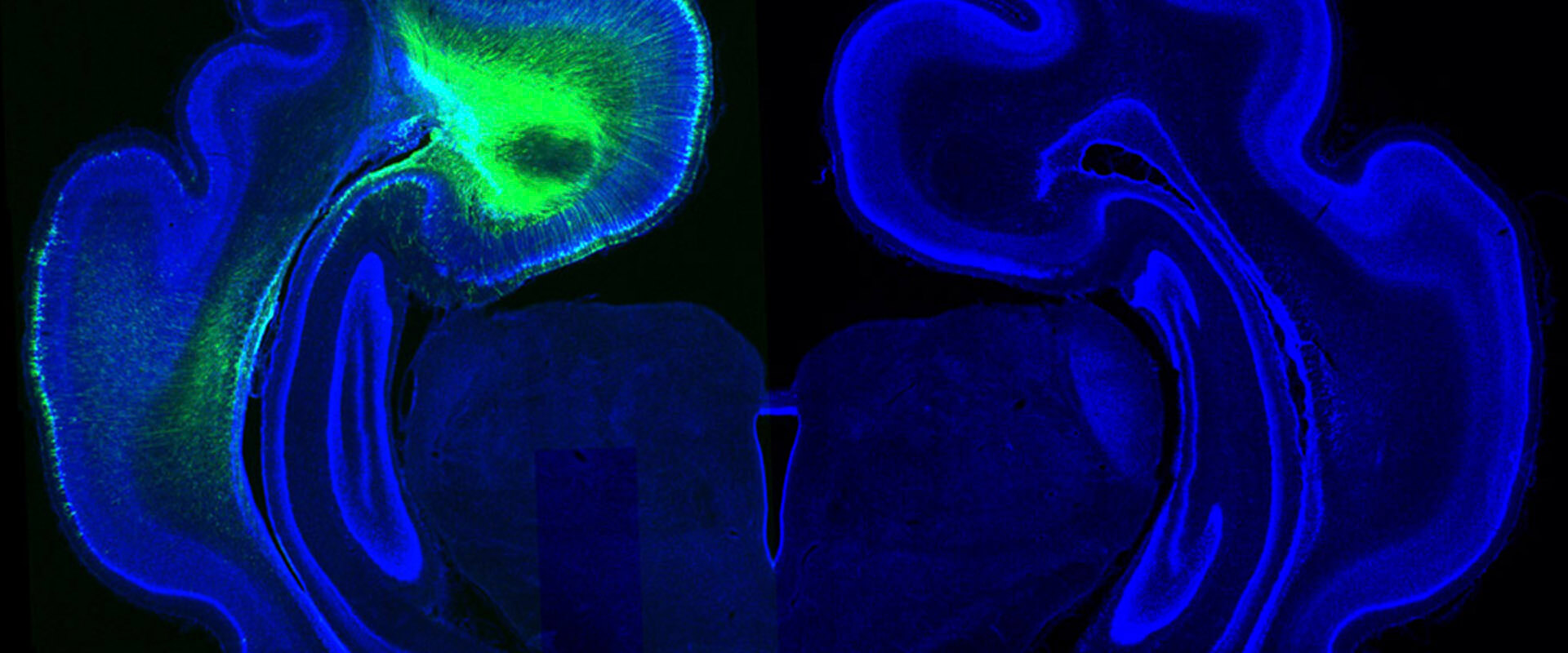Regulation of cerebral cortex size and folding by expansion of basal progenitors
Evolution of the mammalian brain encompassed a remarkable increase in size of the cerebral cortex, which includes radial and tangential expansion, and the formation of folds. Various subtypes of neural stem and progenitor cells have been proposed to contribute differently in regulating thickness or folding of the cerebral cortex during development, but their specific roles have not been demonstrated. Although the mechanisms underlying the expansion and folding of the cerebral cortex remain largely unknown, two complementary studies performed by the laboratory of Dr. Víctor Borrell in collaboration with the labs of Dr. Calegari and Dr. Götz, represent fundamental steps towards our understanding of the regulation of these mechanisms.
The first study, published in EMBO J, reports that controlled expansion of unipotent basal progenitors in mouse embryos leads to megalencephaly, with increased surface area of the cerebral cortex, but not to cortical folding. In contrast, expansion of multipotent basal Radial Glia cells in the naturally gyrencephalic ferret is sufficient to drive the formation of additional folds and fissures. In both models, changes occur while preserving a structurally normal, six-layered cortex. This is the first demonstration of specific and distinct roles for basal progenitor subtypes in regulating cerebral cortex size and folding during development.
The second study, published in Cell, reports the identification of the DNA-associated protein Trnp1 as a master regulator of cerebral cortex expansion and folding. Gain- and loss-of-function experiments in the mouse cerebral cortex in vivo demonstrate that high Trnp1 levels promote neuronal stem cell self-renewal and lateral expansion. In contrast, lower levels promote radial expansion, increasing the number of intermediate progenitors and basal Radial Glia cells which lead to folding of the otherwise smooth murine cerebral cortex. Remarkably, TRNP1 expression levels exhibit regional differences in the cerebral cortex of human fetuses, anticipating radial or tangential expansion of those regions. Thus, the dynamic regulation of Trnp1 is critical to control tangential and radial expansion of the cerebral cortex in mammals.

 Español
Español
